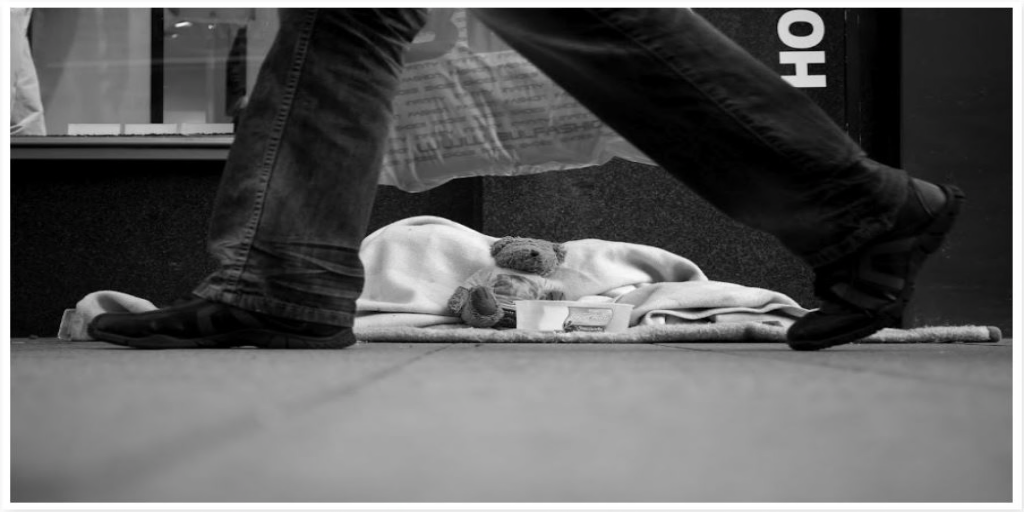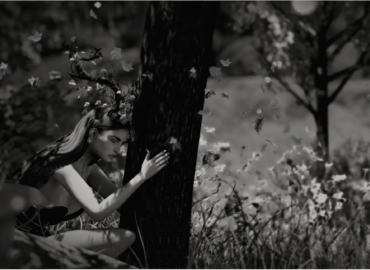~ Photo Cafe' ~ Photographers - Episode #41!
~ Chat Transcript ~
19th of August, 2023
"Framed!"
H.12:00 PM SLT
[The following Episode #42 will be on:
2nd of September 2023]
[12:12] Kika Yongho: Hello Photographers, what a day today!!! Our episode #41 **SPECIAL** started with a blast of a double party so far!
If anyone just arrived and missed bits, today’s episode is ongoing with the set of DJ Bee + DJ Booka to follow and the opening of Moki’s “recycled expo” titled “Genesis”!
[12:12] Kika Yongho: Let’s start the intro today with a few words on Moki Yuitza ‘s expo. There are notes in the easel at the wooden house location, where the expo is. We read some highlights:
«”GENESIS” is the tale of rebirth, personal liberation, change and transformation. Like a caterpillar that turns into a butterfly, freeing itself from the petrified vestiges of the past.»
«This Expo would not have been possible without dixmix Source, who believed in my abilities, always encouraged me to do better and gave me the opportunity to exhibit in his gallery.»
[12:13] Kika Yongho: If you wish to know more about Moki and/or the expo, other than the artist’s bio and more details in the expo notes, you can as well read this great article written by Violet Boa on the Virtuality.blog with some Q&A to the artist:
[12:14] Kika Yongho: Moki’s technique for the photos in this expo is something that you must see, as there is an “embossed” effect that is hard to render with words.. Just go there and take a look from every angle to the beautiful 10 images that compose this exhibit!
[12:14] Kika Yongho: You have about… 3 months time before we will select a new “recycled expo” to present (again!) to you! If you have an exhibit that you would like to display again here, please feel free to drop me an IM at any time, to arrange a slot!
[12:15] Kika Yongho: Before starting this episode I have a “special thanks” list for this episode prequel.. Here I go! (in order of appearance)
Moki… for the beautiful exhibit on display today.. and for being you ♥
Dixmix… for allowing us to display the exhibit again here.. and for being you ♥
Bee… for the beautiful vibes and tuneees, sisterhood.. and for being you ♥
Booka… for the beautiful vibes and tuneees.. and for being you ♥
Violet… for the wonderful PR and dedication.. and for being you ♥
Photo Cafe’ staff: Duraya, Kapaan and Dane… for all the work “behind the scene” and passion for it.. and for being you ♥
Everyone who came here today (and those who couldn’t but would have!).. Thank you for your presence and support.. and for being you ♥
Thank you all!!!
[12:15] Kika Yongho: I won’t steal any more time to this loooong episode, and I will pass the virtual mic to Duraya for this episode #41 titled.. “Framed”! Please Duraya, if you will continue, I am roger and out!
[12:16] Duraya: Thanks Kika for your words and your appreciation.
[12:16] Duraya: And thank you Moki for showing your art, it’s a remarkable start of our “recycled expo” and it only shows that it’s good to present an exhibition again and again.
[12:16] Duraya: Nothing against moving on, developing and making new art but we mustn’t forget our old ‘babies’ and the love and effort we invested in them and how well they too show our imagination and creativity.
[12:17] Duraya: For everyone who doesn’t know me, I am your moderator and will try to get some order into the following discussion.
[12:18] Duraya: Today’s theme, the frames, arose during a brainstorming Kika and I did recently. I didn’t take it seriously at all at first and I had to warm up to it
[12:18] Duraya: It’s also credited to onceagain’s and Dane’s preference for square frames and my curiosity to finally find out their secret.
[12:19] Duraya: So how to approach this, I asked myself.
[12:19] Duraya: Is it about frames like decorative pieces of wood, metal etc. we present our work in, sometimes using passe-partouts, asking ‘is it better with or without a frame and why and which?’
[12:20] Duraya: Is it about choosing a ratio before you go take your shots?
[12:20] Duraya: Or can it be seen in a broader sense?
[12:21] Duraya: Well it’s up to us I suppose!
[12:23] Duraya: Framing is one technique that uses either natural or artificial elements in the photograph to focus on a particular subject. It guides a viewer’s attention to your subject and tells a story through your image simultaneously.
[12:23] Duraya: It’s part of composition.
[12:23] Duraya: Everything can be a frame here, rocks, doors, walls, shadows and adding blur etc in post processing ….
[12:24] Duraya: Do you consciously use it?
[12:25] A. (ava.darkheart): c
[12:26] v ɪ ᴄ (victoria.worbridge): c
[12:26] Duraya: please comment Ava
[12:30] A. (ava.darkheart): Dura, thanks for this intro you almost say all about framing… But beside the fact that eyes of the viewer will automatically be focused on the framed subject there is also some deeper feels that you can express with frames… this make me think of the “Mommy” , movie from Xavier Dolan (i know it’s not the subject but..” most of the movie is framed in a small window, and there is 2 moments during this movie where the frame starts to slowly become bigger. The feeling there is incredible. If you didn’t see it i wont spoil it but what i mean is some emotions can been driven with using frames. DONE!
[12:31] Duraya: thank you for the comment, that’s exactly what we want to share, what is the use of specific frames and does it add to the picture, vic is next please
[12:32] Moki Yuitza: c
[12:35] v ɪ ᴄ (victoria.worbridge): Everything is a frame in a sense… we are limited in what we see inside the lens/frame/even our own sight and have control over what we choose to look at and what we envision the viewer to look at. In a sense, the actual frame in which we display works can be an enhancement of that. In my own experience and process, I always see/approach it as a post production conversation of what benefits or expresses/showcases the image best. For example, I have an artist who had their image inverted so the focus was pulled towards the light. For this, I approached it almost like an x-ray and illuminated the image from behind, like a light box would, so the viewer could be pulled into those brights, therefore emphasizing and giving the experience to the viewer. I think there’s tremendous things that can be done to put things into perspective and showcase the point the artist is trying to make. DONE
[12:36] Duraya: thank you vic and Moki is next
[12:37] Moki Yuitza: speaking not of the physical frame but of the cut of a photo, I think I use it consciously and unconsciously at the same time.
[12:37] Moki Yuitza: I try to explain myself: when I’m looking for the right angle for an image, I think “horizontally”, so I instinctively look for the right angle that is “contained” in a horizontal rectangle. not just a horizontal rectangle, but one that has a certain aspect ratio.
[12:38] Moki Yuitza: moreover, precisely for this reason, I realize that I instinctively look for horizontal, rectangular elements, or “lines of force” within my imaginary frame that develop within it. then of course in post-production I refine the cut …. which is always horizontal stretched. Done
[12:38] v ɪ ᴄ (victoria.worbridge): q
[12:38] Duraya: thank you Moki, vic you have a question, please go ahead
[12:40] v ɪ ᴄ (victoria.worbridge): Moki, you brought up framing within your shot and how you line up and position your lens/frame etc.. I actually wanted to ask the group if they used similar methods, rule of thirds, etc. and how you see that as better encapsulating your vision?
[12:41] v ɪ ᴄ (victoria.worbridge): Does this mean that the thought then comes after the image or before? Done
[12:41] Moki Yuitza: may i answer?
[12:41] Duraya: sure Moki
[12:42] Moki Yuitza: i never use a rule consciously, but if i try to find it later in my image, you can bet that there is one, done
[12:43] Duraya: this is how expertise is defined
[12:43] A. (ava.darkheart): q
[12:43] Duraya: you learn and use rules and after a while you forget them and they will be part of everything you do, Ava, go ahead please
[12:45] Jude Elowyn (judeintime): c
[12:46] A. (ava.darkheart): Can we say that finally the Rule of thirds in photography is a way to use the photographic requirement that it is “naturally” a rectangle or a square like an invisible frame? That the way we place our subject make this effect an “invisible frame”. Am not sure if it’s clear. done
[12:47] Duraya: anyone who really understood may answer
[12:48] v ɪ ᴄ (victoria.worbridge): c
[12:48] Moki Yuitza: c
[12:49] Duraya: yes vic, please answer
[12:50] v ɪ ᴄ (victoria.worbridge): not sure if this is really an answer but, I had a mentor once who would take my contact sheets and draw a giant X over every image to try to get me out of my habit of placing the subject or focus in the center. I know, now, he was attempting to challenge me to see things differently or create more complex images, but I remember at the time being so frustrated, by this and it made me treat the rectangle/square camera frame with a different respect. Maybe by having these “rules” or visible/invisible frames or guidelines are just trying to get us to take our time and really LOOK instead of just pointing without thought? Done.
[12:52] Duraya: thank you vic, great remark, looking and feeling are both needed
[12:53] Duraya: Moki, you have a comment on Avas question too?
[12:53] Moki Yuitza: yes, Vic says a lot already, but i would like to add something
[12:54] Moki Yuitza: the rule of the third is just one of many… but like the others, it’s mostly about the content of the frame, I think.
[12:54] Moki Yuitza: I assume that each of us more or less consciously uses the rule that best suits his way of “seeing” and therefore of cutting an image. in the end, what we all seek is to create a balanced image that tells what we want
[12:55] Moki Yuitza: when i work on an image, i always mirror it after the cut
[12:56] Moki Yuitza: if it seems to me still balanced, for me it is good and if not, i go back and try a new cut. Done
[12:56] v ɪ ᴄ (victoria.worbridge): oh interesting method — I like that
[12:56] Duraya: great hint!
[12:56] Duraya: yes vic
[12:57] Moki Yuitza: you can say if the photographer is righthanded or lefthanded from his cuts, try that and done again.
[12:57] Duraya: thanks for waiting for us to finish these comments Jude, it is your turn now please
[12:58] Jude Elowyn (judeintime): I want to talk about one of the examples that Duraya rezzed – the picture of the toy bear, framed by the human legs. I hadn’t envisioned the possibility that the frame could also be an actor in the shot. In the case of the bear the legs to me are an indication of the activity going on around, it makes the bear seem small and ignored. Whilst it’s impossible to derive an intent without the artist present, what I do know is that it inspires some level of imagination within the viewer. It’s a beautiful storytelling method and I think it’s a unique and interesting concept to explore going forward as a photographer. So thank you for that 

[13:00] Duraya: thank you Jude, preparing this was enlightening for me too – I realized I did use framing but I now can approach it more consciously, really look, like vic said
[13:01] Jude Elowyn (judeintime): It really broadened my horizons
[13:02] Duraya: so I have no one on my list and our time is over anyway
[13:03] Duraya: I thank you all for coming and for your comments
[13:03] Duraya: Kika will send out the invites for the next episode which will be on the 2nd September and as far as I remember we might do a fun contest




